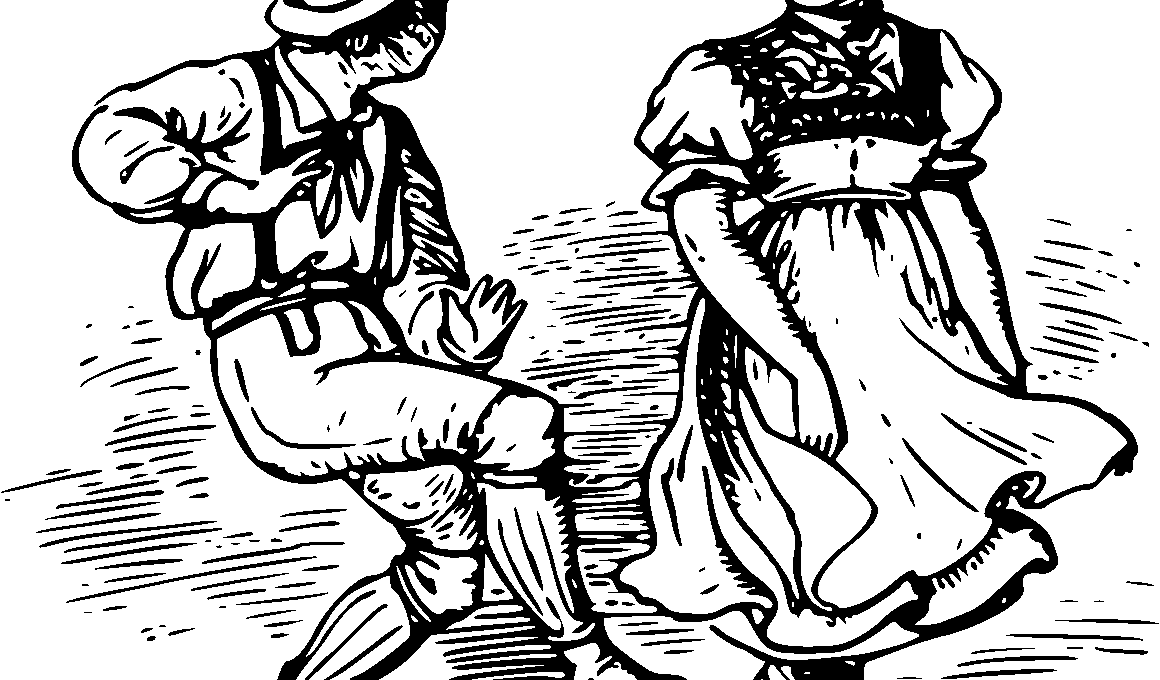Developing Rhythm and Timing in Kids Through Dance Fitness
Dance is an exceptional way for children to develop rhythm and timing, skills that are crucial in many aspects of life. Engaging kids in dance fitness not only improves physical health but also enhances mental acuity and social skills. Children naturally respond to music, making it an enjoyable experience that encourages participation. Through various dance routines, kids can learn to synchronize their movements with musical beats. This synchronization sharpens their listening skills and helps them appreciate music in a new light. Moreover, learning to dance requires concentration, which translates into better focus in other activities, such as school. As children practice moving to the rhythm, they gain confidence in their physical abilities, fostering a positive self-image. The various styles of dance, from hip-hop to ballet, offer diversity, allowing children to explore different movements and rhythms. Parents can support their children’s journey in dance fitness by attending classes and participating at home. Dance classes typically include games, social dancing, and structured routines, all designed to make the learning process fun. Consequently, these classes become a platform for creativity and expression, essential for child development.
The Benefits of Dance Classes for Kids
One of the primary benefits of dance classes is the improvement in coordination. Through practice, children learn body control and how to match movements to the music effectively. This control is vital for playing sports and participating in other physical activities. Additionally, dance helps enhance balance, another important skill for young individuals. A combination of these improved physical skills can lead to greater participation in a variety of life activities. Confidence also grows in environments that celebrate individual expression. In dance classes, children encourage one another, creating a supportive community that nurtures their growth. This positive reinforcement builds a sense of belonging, reducing the likelihood of bullying or social isolation. Dance also promotes emotional development, as kids express their feelings through movement. As they learn to convey emotions via dance, they develop empathy, understanding how to connect with others. Furthermore, dance classes often encourage teamwork and camaraderie, strengthening friendships among peers. These social skills become foundational as they interact with diverse groups throughout their lives. Ultimately, dance fitness fosters an inclusive atmosphere where children can thrive socially, emotionally, and physically.
When teaching children dance, incorporating diverse styles enhances their ability to adapt to various rhythms. Each dance style has its unique blend of movements, timing, and energy that can enrich kids’ overall learning experience. For instance, ballet emphasizes posture and grace, providing a solid foundation for all dance forms. By contrast, styles like hip-hop are energetic, enhancing children’s expressive abilities through improvisation and creativity. Exposure to these diverse forms encourages kids to find their personal dance style, sparking passion and enthusiasm. Providing a well-rounded program can prevent discouragement; kids often recognize their strengths and weaknesses in various styles. Additionally, including cultural dance styles promotes inclusivity and respect for different traditions around the world. Teaching children to move to global rhythms expands their worldview, enhancing cultural appreciation. They learn to value diversity, fostering a global mindset. As they explore movement through different lenses, their imagination flourishes. Dance fosters curiosity, compelling kids to innovate and express themselves beyond conventional methods. Thus, varied approaches do not just create better dancers but teach children invaluable life skills that resonate in all aspects of their lives.
The Role of Music in Dance Learning
Music acts as a powerful motivator in the journey of a child’s dance education. Children often find it easier to connect with rhythm through catchy tunes that inspire them to move. Teachers can utilize various genres of music to influence each dance class’s mood and energy level. By doing so, students learn how different styles of music shape movement, refining their timing as they adapt to various beats. When kids associate music with movement, they develop an intrinsic motivation to dance, often practicing independently at home. Encouraging them to choose their music enhances their investment in the learning process, helping them express individuality. Teachers who effectively incorporate singing and dancing can create a more engaging classroom experience; children respond positively to songs they know. This solidifies the connection between auditory and kinesthetic learning. Furthermore, exposure to diverse musical influences lets them appreciate global artistry, which may lead to exploration beyond dance. In doing so, children develop broader musical tastes and improve auditory discrimination skills, beneficial for school subjects such as reading and mathematics. Hence, music serves as a vital source of inspiration and engagement in dance fitness.
One notable aspect of dance fitness for kids is its ability to improve cardiovascular health while making exercise enjoyable. Regular dance sessions can provide the same level of aerobic activity as other sports. Consequently, dancing helps maintain a healthy weight and enhance overall fitness levels. Many kids’ dance classes incorporate fun warm-up routines, keeping participants excited and keen. Additionally, dance fitness encourages flexibility, strength, and endurance through choreography that utilizes entire body movements. As children progress, they become more adept at various techniques. They also learn the importance of warming up and cooling down to prevent injuries, a lesson that serves them throughout life. Preparing their bodies for physical activity encourages a culture of health awareness from a young age. Also, team-based dance classes offer opportunities for friendships to form as they collaborate toward a common goal. These social dynamics reinforce the value of teamwork and cooperation, which are essential life skills. With consistent scheduling, dance can easily fit into family routines, making fitness a family affair. Having parents involved reinforces commitment and creates shared experiences that strengthen family bonds.
Inclusivity in Dance Programs
Inclusivity is a significant aspect of modern dance programs, creating an environment where every child feels welcome. Tailored classes that accommodate varying abilities empower children to develop at their own pace. These programs allow for adjustments catering to different learning styles, ensuring nobody feels left out. For instance, incorporating visual aids and hands-on demonstrations can benefit children who require additional support, fostering self-confidence. Children with disabilities also thrive in inclusive dance communities. Specialized instructors explore creative adaptations to enable their participation, enriching the dance classroom with unique perspectives. When children understand that everyone can contribute, they become more empathetic and compassionate individuals. Programs designed to celebrate diversity and inclusion offer a platform where children can learn valuable life lessons. They gain insights not only about dance but also about kindness, respect, and camaraderie. Moreover, these experiences prepare children to engage with a multicultural world. Dancers learn to appreciate each other’s differences and celebrate individual strengths within a group. This education is crucial for shaping character and social conscience as they grow. Thus, inclusivity enriches the dance experience, producing well-rounded individuals who value collaboration.
To conclude, dance fitness serves as an extraordinary avenue for developing rhythm and timing among children. By integrating fun, creative expression, and a structured environment, it provides essential tools for their growth. These experiences contribute not only to fitness but to social bonding, emotional development, and cultural appreciation. As children learn and adapt through various dance styles, they enhance their auditory and physical skills alongside their peers. Such collective learning fosters lasting friendships while building confidence in personal capabilities. Encouraging families to participate further strengthens familial relationships and reinforces healthy habits from an early age. Dance classes symbolize much more than movement; they form the foundation of a holistic approach to childhood development. As parents and educators champion these programs, the impact on children can be seen in better health, confidence, and social skills. This nurturing environment empowers kids to face life’s challenges with resilience and creativity. It prepares them not only for a future in dance but provides experiences valuable in various life areas. Dance fitness ultimately equips children with the essential rhythm and timing that extend beyond the dance floor, instilling confidence, discipline, and joy.
Enrolling a child in dance fitness can enrich their childhood in numerous ways. Not only does it encourage a healthy lifestyle, but it provides a fun environment for them to express themselves. Dance is an art form that allows kids to engage with their emotions and connect with peers, fostering socialization skills. Children can also develop strong discipline and responsibility as they learn routines and adhere to class schedules. Regular practice brings about improvement, which gives them a sense of achievement and boosts self-esteem. Dance fitness is beneficial not only physically but also mentally; it can enhance cognitive functions by improving memory and concentration. As kids memorize routines, they sharpen their ability to focus. This skill translates well into schoolwork, helping them in their educational journey. Moreover, dancing has proven to reduce stress and anxiety levels, offering a great outlet for emotional release. Parents can participate in classes, turning it into a shared activity that strengthens familial bonds and encourages healthy lifestyle choices. Ultimately, the benefits of dance fitness extend beyond the steps learned; they influence areas of life, making it a significant commitment for any child.


